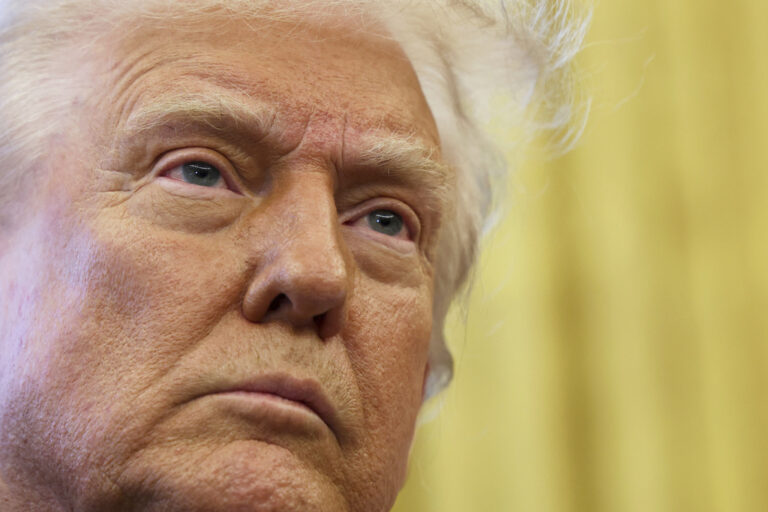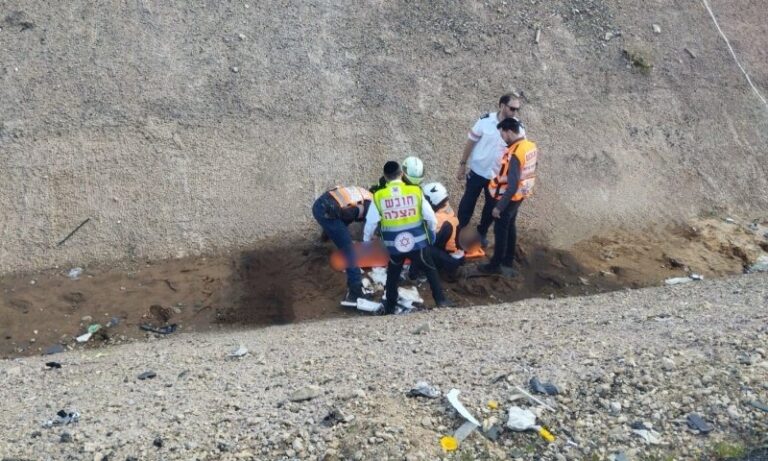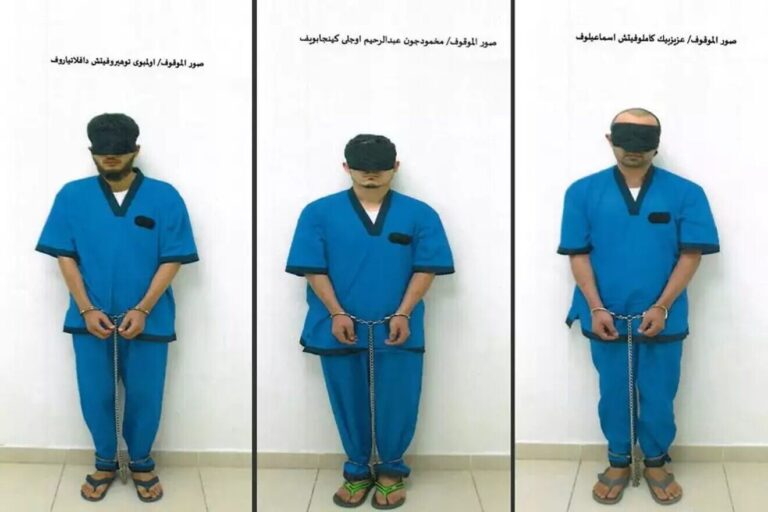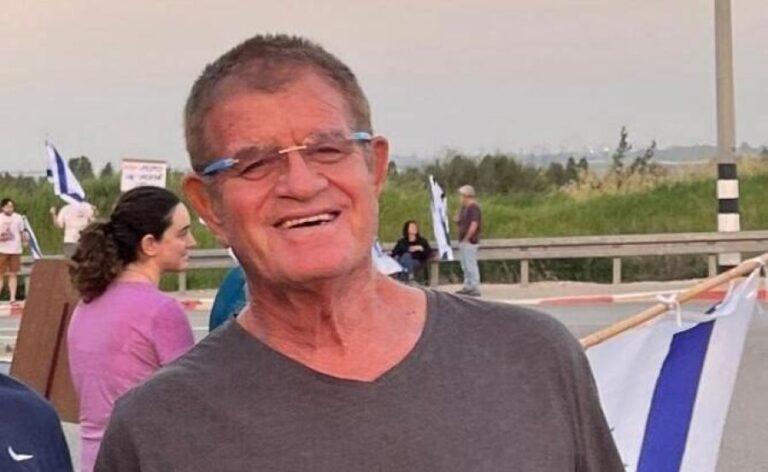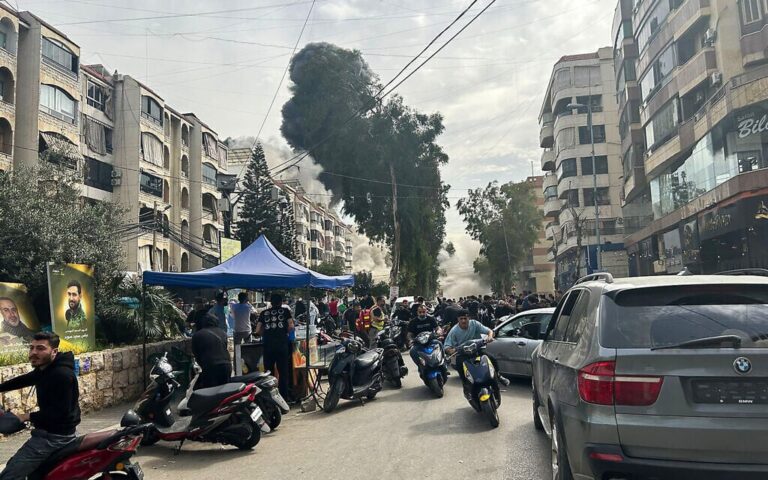Rattled by nationwide protests over jailed opposition leader Alexei Navalny, Russian authorities are moving rapidly to block any new ones – from piling legal pressure on his allies to launching a campaign to discredit the demonstrations.
Unprecedented mass rallies across Russia on Jan. 23 demanding Navalny’s release from jail resulted in thousands of arrests, and dozens of criminal investigations were opened. Scores of his associates and top allies have been jailed, with some facing criminal charges that carry prison terms.
President Vladimir Putin likened organizers of the protests to “terrorists,” and lawmakers charged that Navalny was a Western stooge and betrayed his country to benefit Russia’s adversaries.
Navalny’s team admits the pressure is unprecedented, but says it won’t give in and is calling for another demonstration Sunday.
WHAT LED TO THE PROTESTS?
Navalny, Putin’s fiercest critic, returned to Russia on Jan. 17 after five months in Germany, where he was recovering from a poisoning with a nerve agent that he blames on the Kremlin and that Russian officials deny.
The 44-year-old Navalny was arrested at the airport upon arrival and jailed for 30 days, pending a court hearing into whether to send him to prison for alleged probation violations of a past conviction — which he claims was politically motivated. A court Thursday refused to release Navalny, rejecting his appeal of his arrest.
Navalny is famous for his video investigations of official corruption. After his arrest, his team released a report on his YouTube channel about a $1.3 billion seaside compound allegedly built for Putin, featuring lavish Italian furnishings and even expensive toilet brushes. It has gotten over 100 million views. The Kremlin and even Putin — who never mentions Navalny by name — denied it was built for him.
Navalny’s team called for mass protests demanding his release on Jan. 23, and tens of thousands of people took to the streets in more than 100 Russian cities in the largest and the most widespread outpouring of anger toward the Kremlin in years. Rallies took place despite their lacking authorization, something that previously deterred a big turnout because of the threat of arrests.
WHAT WAS THE RESPONSE BY AUTHORITIES?
Days before the protests, scores of Navalny’s associates were detained. Warnings that his team was encouraging minors to take to the streets started spreading among parents. Navalny’s team rejected the accusations.
At the protests themselves, over 4,000 people were detained, according to OVD-Info, a human rights group that monitors political arrests. It said it was the most in its nine-year history of keeping records in the Putin era. In some cities, rallies were dispersed aggressively, and human rights advocates said there were instances of violence. About 20 criminal investigations were opened on a wide range of charges.
On Wednesday, Moscow police carried out a series of raids on apartments and offices belonging to Navalny associates and opposition figures, including his own apartment. The searches were conducted as part of investigations into alleged violations of coronavirus regulations during the protests, a charge that carries up to two years in prison.
Five people — including Navalny’s brother Oleg and top ally Lyubov Sobol — have been detained for 48 hours in the case.
Russia’s Investigative Committee also accused Navalny strategist Leonid Volkov of encouraging minors to participate in unauthorized protests. Volkov, who left Russia two years ago, faces a possible prison term if he returns. The case against him was opened a day after he wrote a Facebook post urging minors not to protest.
“We haven’t faced this kind of pressure before,” Ivan Zhdanov, head of Navalny’s Foundation for Fighting Corruption, told the AP.
WHAT ABOUT OTHER OPPOSITION GROUPS?
For years, Russia’s opposition has consisted of fractured groups that often disagree with each other, although there have been instances of unity in recent years: In 2019, a campaign to allow opposition candidates to run for Moscow city council saw a dozen different politicians rally together and galvanize mass protests every weekend for several weeks.
Navalny’s case drew unanimous support from various opposition politicians, even those who usually disagree with him. They attended the Jan. 23 rally, issued statements demanding his release and shared the video about “Putin’s palace” on social media.
“The pressure on someone who is an opponent to the sitting government, of course, affects everyone, and we need to defend each and every one and try to help somehow,” Moscow politician Yulia Galyamina, who rose to prominence in the 2019 campaign and faced prison herself for protest violations, told The Associated Press.
Some activists have gotten caught in the crossfire. Moscow police detained a member of the Civil Society movement, raided his home and that of another member in the Navalny investigations. The home of Galyamina’s spokesman also was raided.
DOES THE KREMLIN SEE THE PROTESTS AS A THREAT?
Officials dismissed last week’s protests as small. Kremlin spokesman Dmitry Peskov said a “negligible number” of people turned out to the rallies, compared with the number of people who vote for Putin.
At the same time, state-controlled TV, which usually ignores opposition protests, dedicated long segments to the rallies, focusing on instances of violence by demonstrators and emphasizing police restraint.
Navalny’s team said Wednesday on the messaging app Telegram that the raids this week are a sign of Putin’s “crazy fear” of mass rallies.
Analysts believe the government takes the protests very seriously. Tatyana Stanovaya, founder of R.Politik, a political think-tank, says the leadership to some extent understands that there have been reasons for the public’s frustration since an unpopular 2018 pension reform, in which retirement ages were raised. But the Kremlin also believes the unrest that Navalny is fomenting is being backed by foreign adversaries.
“On one hand, there is public frustration, on the other hand, there’s … opposition that in the Kremlin is perceived as an instrument of foreign intelligence agencies. This combination can work to toughen the authorities’ line,” Stanovaya told AP. “I think we’re already seeing it.”
WHAT WILL HAPPEN NEXT?
Both analysts and Navalny allies believe the crackdown will continue and probably escalate as the standoff between the politician and the authorities continues.
“I’ve been working with Navalny for 10 years, and year after year this repression machine against us has never slowed down — it has only picked up speed,” Sobol told reporters a day before her arrest.
Other Navalny allies remain undeterred. “We hope that this will anger the people even further ahead of the rallies on Jan. 31, and even more people will turn up,” Zhdanov said.
It is crucially important for authorities to keep the situation under control ahead of September’s parliamentary election, political analyst and former Kremlin speechwriter Abbas Gallyamov said on Facebook.
The election will determine who controls the State Duma in 2024, when Putin’s current term expires and he can seek reelection to another six years in office, thanks to constitutional reforms last year.
“In the midst of worsening living conditions and growing demand for changes, a person is already inclined to refuse their support to the authorities. To add insult to injury, protesters appear, showing the discontented that they’re not alone,” Gallyamov said. “Intensifying street protest could cost the authorities an electoral catastrophe. To avoid it, any means are good.”
(AP)



